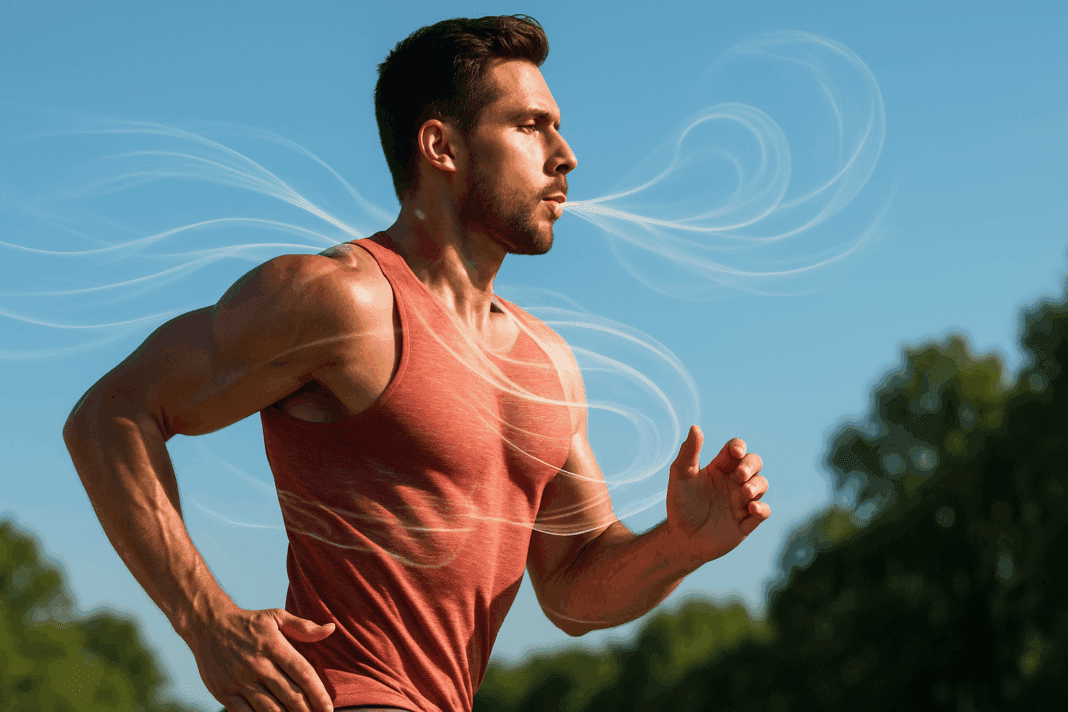The human respiratory system is an elegant, finely tuned structure that delivers the essential fuel for life: oxygen. During exercise, our breathing becomes deeper, faster, and more coordinated, reflecting the body’s urgent demand for increased oxygen and efficient carbon dioxide removal. But how exactly does exercise affect the respiratory system? And why do we breathe harder when we exercise? These questions are not just academic; they have real-world implications for athletes, fitness enthusiasts, and anyone striving to improve endurance or support lung recovery through physical activity.
Understanding the role of breathing while exercising, including proper techniques and physiological adaptations, is essential for optimizing performance and long-term lung health. Whether you’re a runner, cyclist, swimmer, or weekend warrior, breathing during workouts is far more than a passive response—it’s an active, dynamic component of physical performance and well-being. This article explores the intricate relationship between exercise and the respiratory system while offering expert insights into breathing techniques that enhance stamina and respiratory efficiency.
You may also like: How to Increase Stamina and Endurance Naturally: Smart Training Tips and Nutrition Habits That Support Cardiovascular Fitness

Why Do We Breathe Faster When We Exercise? A Physiological Perspective
To appreciate the importance of breathing during exercise, it’s necessary to first understand the changes that occur within the body. When we engage in physical activity, especially vigorous exercise, the respiratory system kicks into high gear to support increased metabolic demand. Muscles require more oxygen to generate energy through aerobic respiration, and they also produce more carbon dioxide as a byproduct.
This increased demand for oxygen and removal of waste gases explains why we breathe faster when we exercise. Known as “exercise-induced hyperpnea,” this process reflects a balance between oxygen uptake and carbon dioxide expulsion. During vigorous exercise due to respiratory system demands, ventilation can increase up to 20 times the resting rate, helping the body maintain homeostasis and avoid the build-up of lactic acid.
Furthermore, our brain plays a key role in regulating this response. The medulla oblongata, a part of the brainstem, senses elevated levels of carbon dioxide in the blood and signals the respiratory muscles to increase breathing rate and depth. This explains the involuntary nature of faster breathing during physical activity and highlights how tightly integrated the brain and lungs are in managing exertion.

How the Aerobic Respiration System Works with Exercise
The aerobic respiration system is the backbone of endurance-based activities. Unlike anaerobic metabolism, which relies on stored energy for short bursts of effort, aerobic respiration requires a steady supply of oxygen to convert glucose and fatty acids into usable energy (ATP). The more efficiently this system works, the longer and harder you can exercise without fatigue.
When we begin exercising, the heart rate increases to pump more oxygen-rich blood to the muscles. At the same time, the lungs expand more fully, and the respiratory rate increases to accommodate this demand. Understanding how the aerobic respiration system works with exercise underscores the importance of well-developed lung capacity and cardiovascular fitness. The lungs must be capable of handling increased airflow, while the capillaries in the alveoli—the tiny air sacs in the lungs—must efficiently transfer oxygen into the bloodstream.
These processes also explain why correct breathing during exercise is crucial. Shallow or inefficient breathing can compromise oxygen delivery, hasten fatigue, and limit endurance. On the other hand, mastering breathing techniques during exercise allows athletes to improve oxygen uptake, reduce strain on the respiratory muscles, and maintain better performance throughout the activity.
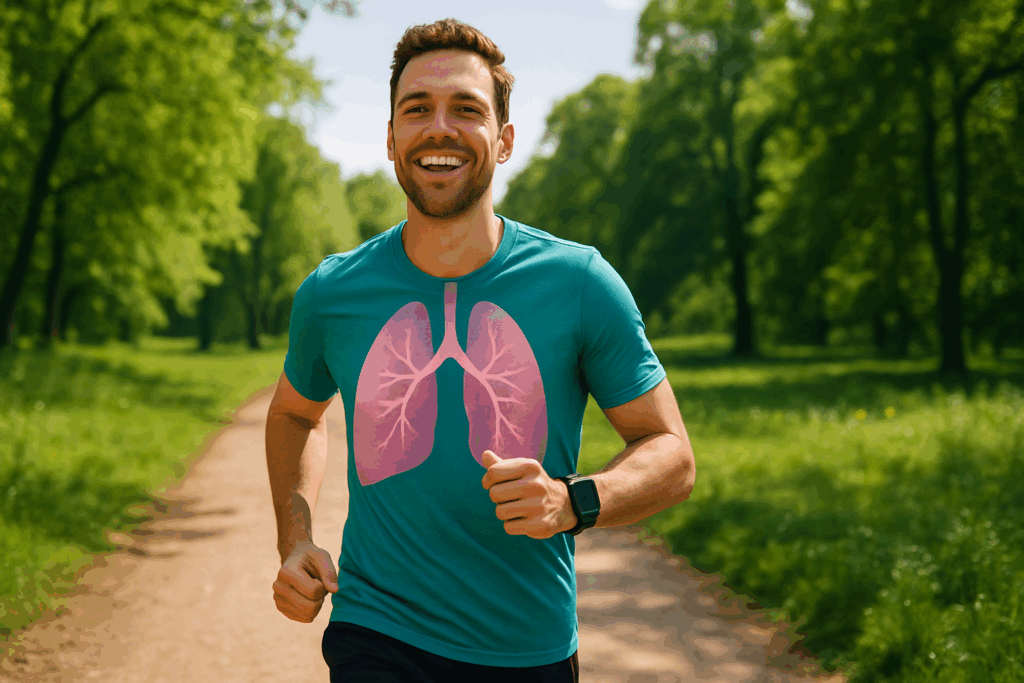
Does Running Improve Lung Health? The Link Between Lungs and Running
Many people wonder: does running improve lung health? The short answer is yes—but with important caveats. Running regularly helps to enhance lung function by increasing lung capacity, improving oxygen uptake, and strengthening the muscles used for breathing. It also conditions the cardiovascular system, which works in tandem with the respiratory system to fuel movement.
The relationship between lungs and running is bidirectional. Strong lungs improve running performance, and regular running can, in turn, make the lungs more efficient. This is especially beneficial for individuals recovering from respiratory illness or those with mild symptoms of shortness of breath. However, it’s important to remember that the lungs themselves do not become significantly larger; rather, their ability to transfer oxygen and expel carbon dioxide becomes more effective.
Another key benefit of running is improved diaphragmatic function. The diaphragm, the primary muscle involved in breathing, becomes stronger with consistent aerobic exercise. As a result, you may notice that running helps you breathe more easily over time. Therefore, for those asking “is running good for your lungs” or “does running help your lungs,” the evidence suggests a clear and encouraging yes, provided the individual does not have underlying respiratory issues that limit safe participation in aerobic activities.
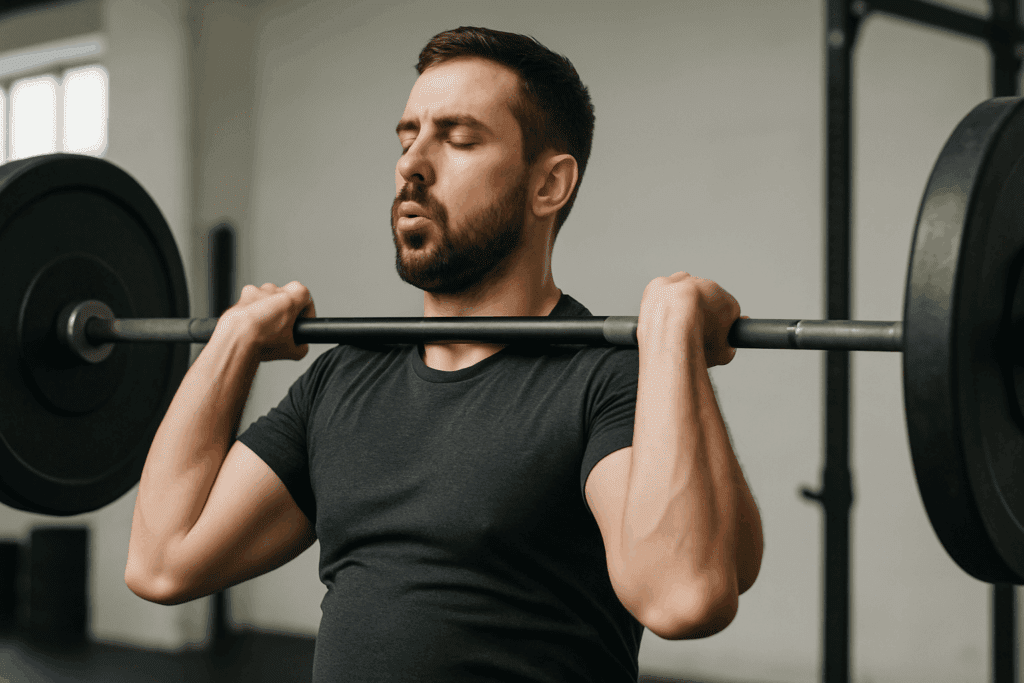
Breathing While Exercising: Why Technique Matters
Breathing while exercising might seem like a simple act, but it’s actually a skill that can be refined and optimized. Whether you’re lifting weights or pushing through a high-intensity interval session, how to breathe during exercise plays a major role in how well your body performs and recovers. Proper technique ensures that the muscles receive adequate oxygen, fatigue is delayed, and stress on the heart and lungs is minimized.
One fundamental concept is rhythmic breathing—synchronizing your breaths with your movements. In running, for example, a common technique involves inhaling for three steps and exhaling for two. This pattern helps balance breathing load across both sides of the body and can reduce the risk of side stitches. In strength training, exhaling during the exertion phase (e.g., lifting the weight) and inhaling during the recovery phase helps stabilize the core and regulate intra-abdominal pressure.
Mastering how to breathe properly during exercise takes practice, especially during intense workouts where the body’s instinct might be to gasp for air. Shallow chest breathing limits lung expansion and oxygen intake, whereas diaphragmatic breathing—engaging the belly—promotes full oxygen exchange. For this reason, the importance of breathing during exercise cannot be overstated; it’s one of the foundational skills that can dramatically affect stamina and long-term respiratory health.
Can Exercise Help Shortness of Breath and Support Lung Recovery?
Shortness of breath can be a distressing experience, often linked with medical conditions such as asthma, chronic obstructive pulmonary disease (COPD), or post-viral respiratory inflammation. But can exercise help shortness of breath? The answer is nuanced. While exercise is not a cure, it can be a highly effective tool for improving breathing efficiency, increasing oxygen saturation, and reducing the sensation of breathlessness over time.
Low- to moderate-intensity aerobic training, particularly activities like walking, swimming, or stationary biking, can gently challenge the respiratory system in a controlled way. Over time, this helps retrain the body to tolerate greater exertion without experiencing disproportionate dyspnea. Techniques such as pursed-lip breathing or interval-based training with built-in rest periods can also improve tolerance and promote lung recovery.
This brings us to an important question: is cardio good for lung recovery? When appropriately prescribed and performed, cardiovascular exercise supports pulmonary rehabilitation by enhancing alveolar ventilation, strengthening respiratory muscles, and facilitating better oxygen-carbon dioxide exchange. Whether you’re recovering from illness or simply aiming to build endurance, cardio can be a critical component of your wellness toolkit.
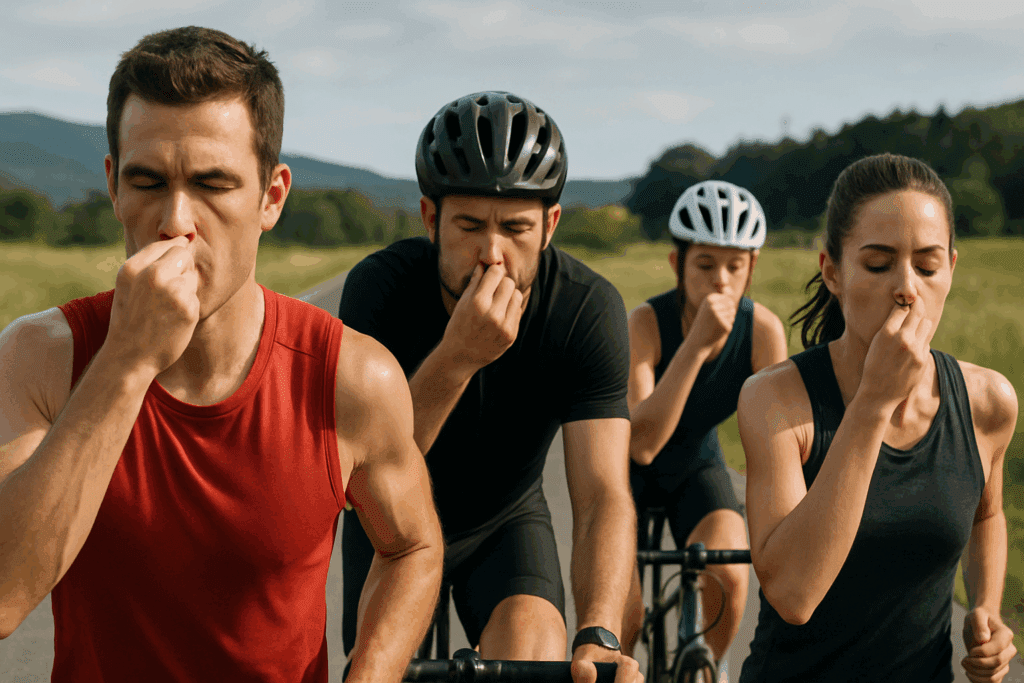
Breathing Techniques During Exercise for Endurance and Performance
The foundation of efficient performance lies in mastering breathing techniques during exercise. For endurance athletes, proper breathing is not just about comfort—it’s about maximizing oxygen delivery while minimizing fatigue. Controlled breathing helps maintain focus, regulate energy expenditure, and even reduce perceived exertion.
One of the most effective techniques is nasal breathing, especially during low to moderate intensity workouts. Nasal breathing filters and humidifies the air while promoting diaphragmatic engagement. Though it may feel restrictive at first, regular practice enhances lung efficiency and trains the body to utilize oxygen more effectively. For high-intensity sessions, switching to mouth breathing may be necessary to meet oxygen demands, but nasal breathing should still be practiced regularly as part of training.
Another critical strategy involves cadence breathing—matching your breathing rhythm to your movement pace. In swimming, this might mean inhaling every three strokes. In running, it could involve a 3:3 or 2:2 ratio of steps to breaths. This method reduces the likelihood of breath-holding and promotes a steady, sustainable rhythm that supports endurance.
Also worth noting is box breathing, a technique often used in yoga and athletic recovery. This involves inhaling, holding, exhaling, and pausing—each for an equal count. Practicing this off the field can condition your respiratory muscles, making them more responsive during exercise. Correct breathing during exercise, therefore, is not just about habit; it’s about intentional, strategic patterns that enhance overall output.
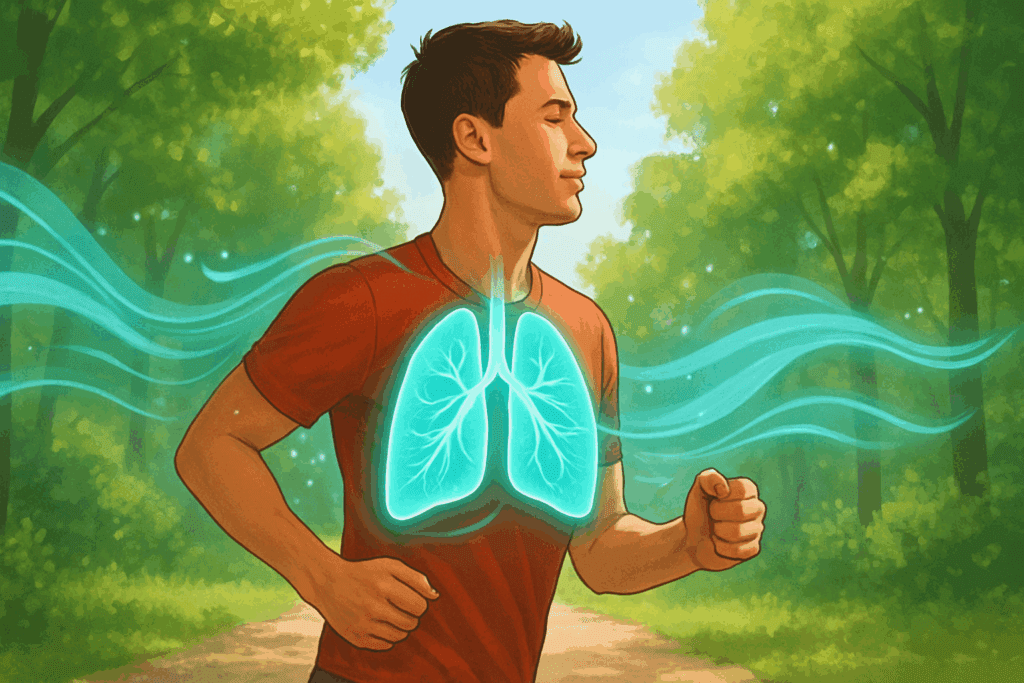
Does Exercise Increase Oxygen Levels and Lung Capacity?
Among the most common questions for those beginning a fitness journey is: does exercise increase oxygen levels? The answer is a qualified yes. While oxygen levels in the blood (measured as SpO2) typically remain stable in healthy individuals, exercise can improve how effectively the body uses that oxygen. This phenomenon, known as improved oxygen utilization or VO2 max, is a key indicator of cardiovascular and respiratory efficiency.
As you engage in regular aerobic activity, your body becomes more adept at extracting oxygen from the air and delivering it to muscle tissues. The result is not only greater endurance but also improved cognitive function, energy levels, and recovery. This is particularly relevant for endurance athletes, for whom maximizing oxygen efficiency is critical to performance.
Similarly, does running increase lung capacity? While lung volume itself is largely determined by genetics, regular aerobic exercise can enhance functional lung capacity. This includes better tidal volume (air per breath) and reduced residual volume (air left after exhaling), leading to more effective breathing. In this context, it’s fair to say that running can significantly improve the functional performance of your respiratory system.
Does Running Clear Your Lungs and Promote Respiratory Health?
The idea that exercise can help detoxify or cleanse the lungs is appealing, but it’s important to ground this concept in science. So, does running clear your lungs? Not in the sense of physically removing toxins or debris—that function belongs to specialized cells and structures within the respiratory tract. However, regular aerobic activity like running does promote better airway clearance and supports the overall health of the respiratory lining.
Physical movement helps stimulate ciliary action—tiny hair-like structures that move mucus and trapped particles out of the lungs. Additionally, deeper breathing during runs can mobilize stagnant air and encourage full lung expansion, which can reduce the risk of infections and atelectasis (lung collapse). For athletes and those recovering from mild respiratory issues, this natural “cleansing” effect can be an important part of maintaining pulmonary resilience.
This is especially true for those engaged in sport lung training or pulmonary rehabilitation. The focus here is not only on performance but also on optimizing respiratory mechanics and preventing complications associated with inactivity or shallow breathing patterns. In this light, the question “does running help your lungs” becomes not just a matter of physical fitness, but of long-term respiratory care.
Correct Breathing During Exercise: A Skill Worth Developing
Breathing may be automatic, but breathing well is a skill—one that can and should be cultivated through practice and awareness. Correct breathing while exercising is essential for maintaining performance, reducing injury risk, and enhancing recovery. For many, this begins with simply paying attention to the breath—noticing whether it’s shallow, erratic, or overly forced.
Engaging in breath-focused exercises such as yoga, Pilates, or specific respiratory muscle training can significantly improve awareness and control. Over time, this translates into more efficient breathing patterns during sports and workouts. Proper technique also reduces the likelihood of hyperventilation or breath-holding under strain, both of which can negatively impact oxygen balance and endurance.
Ultimately, breathing while exercising is important not just for athletes, but for anyone seeking to move more mindfully and effectively. As awareness of respiratory health continues to grow—especially in light of global respiratory illnesses and recovery needs—learning how to breathe properly during exercise becomes a foundational element of holistic fitness and wellness.
Frequently Asked Questions: How Exercise Affects the Respiratory System and Breathing Techniques for Lung Health
1. Can breathing patterns influence mental focus and emotional resilience during workouts?
Absolutely. Breathing while exercising doesn’t just influence physical performance; it also plays a critical role in regulating the autonomic nervous system. Deep, controlled breathing during workout sessions can help shift the body from a sympathetic (fight-or-flight) to a parasympathetic (rest-and-digest) state, enhancing emotional balance. Many athletes report improved mental clarity and reduced anxiety simply by focusing on how to breathe during exercise. This connection between respiration and emotional control highlights the importance of breathing during exercise not only for oxygen delivery but for psychological endurance as well.
2. Why do some athletes develop more advanced respiratory control than others?
Athletes who train in high-altitude environments or those engaged in endurance sports like swimming often develop enhanced respiratory capacity and control. This adaptation isn’t solely genetic; it results from consistent practice of breathing techniques during exercise and exposure to demanding oxygen environments. Sport lung conditioning, such as underwater training or resistance breathing devices, can increase respiratory muscle strength. These adaptations explain why some people exhibit less shortness of breath during vigorous exercise due to respiratory system efficiency. Over time, their bodies optimize how the aerobic respiration system works with exercise, reducing perceived exertion.
3. How can I tell if I’m breathing incorrectly while exercising?
Signs of inefficient breathing include dizziness, early fatigue, and tension in the shoulders or chest. Many people unknowingly revert to shallow chest breathing or hold their breath under physical strain. This disrupts how aerobic respiration system works with exercise by limiting oxygen uptake and increasing carbon dioxide buildup. Practicing how to breathe properly during exercise through diaphragmatic techniques can correct these habits. Correct breathing during exercise should feel smooth, rhythmic, and involve expansion of the abdomen more than the chest.
4. Is cardio good for lung recovery in people with mild respiratory conditions?
Yes, when appropriately prescribed, cardio can play a crucial role in pulmonary rehabilitation and recovery. For individuals recovering from viral infections, asthma, or mild COPD, low-impact cardiovascular activities help restore lung elasticity and improve alveolar gas exchange. Does exercise increase oxygen levels in this population? Not necessarily in baseline blood saturation, but it does improve how effectively oxygen is used. Structured breathing while exercising, especially using techniques like pursed-lip breathing, can enhance tolerance and reduce breathlessness. Always consult with a healthcare provider to determine the safest cardio protocols for lung recovery.
5. Why do we breathe harder when we exercise in cold or polluted air?
Cold and polluted environments increase airway resistance, requiring the respiratory muscles to work harder during physical exertion. This adds an extra burden to how the respiratory system performs under stress. Why do we breathe faster when we exercise in these conditions? It’s a compensatory response—the body increases respiratory rate to meet oxygen demands despite narrowed or inflamed airways. Wearing a mask or scarf during winter runs can warm and humidify the air, supporting more efficient breathing during workout sessions. This is especially important for runners or cyclists training in urban environments where lungs and running must cope with environmental stressors.
6. Does running increase lung capacity or just strengthen breathing muscles?
While lung volume is mostly determined by genetics and body size, running helps increase functional lung capacity. This means your lungs become more effective at exchanging gases and clearing out carbon dioxide. So does running help your lungs work better? Yes, through stronger respiratory muscles and improved tidal volume. Many runners also experience fewer upper respiratory tract infections due to enhanced mucociliary clearance, leading some to believe that running clears your lungs. Incorporating interval training that challenges your breathing during exercise is particularly effective for maximizing respiratory efficiency.
7. Can breathing training improve performance for non-athletes or older adults?
Certainly. Breathing techniques during exercise aren’t limited to elite athletes. Older adults and sedentary individuals often benefit from learning how to breathe properly during exercise, especially as respiratory function tends to decline with age. Exercises like resistance breathing or slow-paced walking combined with nasal breathing can improve endurance and reduce the sensation of fatigue. In these populations, can exercise help shortness of breath? Yes, when introduced progressively, as it retrains breathing patterns and builds aerobic capacity. Breathing while exercising important habits like slow exhalation also help prevent breathlessness and support daily function.
8. What is the role of breath-hold training in enhancing sport lung capacity?
Breath-hold or hypoxic training, commonly used in freediving and endurance swimming, can expand tolerance to elevated carbon dioxide levels and strengthen the diaphragm. Though advanced and not suitable for everyone, it trains the body to use oxygen more efficiently under stress. For example, learning to stay calm while delaying the urge to breathe during intense workouts refines how aerobic respiration system works with exercise. These adaptations are part of why athletes in breath-hold disciplines often experience less shortness of breath during high-intensity efforts. However, breath-hold exercises should only be practiced under supervision to avoid fainting or hypoxia.
9. Does running help with seasonal respiratory allergies or asthma control?
Interestingly, regular aerobic activity like running can strengthen the immune response and improve lung function in individuals with mild asthma or seasonal allergies. While allergens may initially exacerbate symptoms, controlled running in cleaner environments can desensitize airways over time. Does running help your lungs clear out irritants? Indirectly, yes, by boosting ciliary function and improving mucus clearance. Learning how to breathe during exercise, especially through the nose, can filter allergens and reduce inflammation. Consistent cardio, combined with correct breathing while exercising, supports respiratory resilience through both mechanical and immune adaptations.
10. Are there technological tools that help assess breathing during workouts?
Yes, wearable devices and apps now allow real-time monitoring of respiratory rate, oxygen saturation, and breath efficiency. Tools like respiratory flow sensors, smart masks, and metabolic analyzers are used in sport science to assess how exercise affects the respiratory system. These innovations can help athletes fine-tune their breathing during workout sessions by detecting shallow or erratic patterns. For individuals managing chronic conditions, this data can also show whether exercise increases oxygen levels or exacerbates symptoms. The future of breathing while exercising lies in personalized feedback, empowering users to refine technique and prevent overtraining through smarter biofeedback systems.
Conclusion: Why Breathing During Workouts Is Vital for Lung Health, Endurance, and Recovery
Breathing is more than an automatic function—it’s a vital skill that directly affects how we move, perform, and recover. Whether you’re sprinting, swimming, or lifting, the way you breathe shapes your ability to deliver oxygen, remove waste, and sustain effort over time. For this reason, understanding how exercise affects the respiratory system is key to unlocking peak performance and protecting long-term lung function.
From rhythmic techniques and sport-specific patterns to mindfulness-based practices like diaphragmatic and box breathing, the art of breathing while exercising is important for every level of athlete. By optimizing how we breathe, we improve not only endurance and oxygen levels, but also support lung recovery, manage shortness of breath, and increase overall vitality. In a world increasingly aware of the significance of respiratory health, developing proper breathing habits during exercise is not just an advantage—it’s a necessity.
Incorporating this knowledge into training routines can profoundly impact athletic output, mental focus, and post-exercise recovery. So whether your goal is to boost stamina, increase lung capacity, or simply breathe easier during your daily run, refining your breathing techniques can be the key to achieving it. After all, every breath you take during a workout is an opportunity to strengthen not just your body, but your lungs and your life.
Was this article helpful? Don’t let it stop with you. Share it right now with someone who needs to see it—whether it’s a friend, a colleague, or your whole network. And if staying ahead on this topic matters to you, subscribe to this publication for the most up-to-date information. You’ll get the latest insights delivered straight to you—no searching, no missing out.

